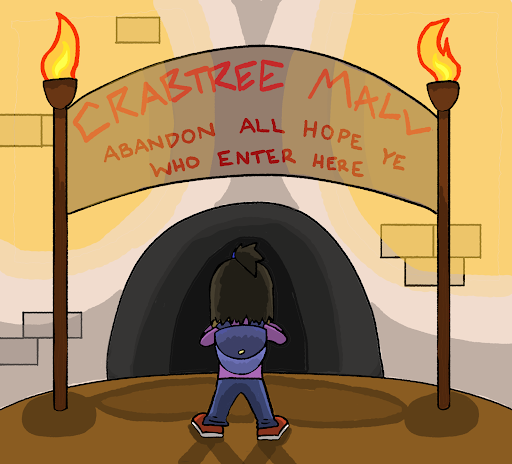A popular activity for many North Carolina students during the school year is to go shopping at the local malls, especially Crabtree. Walking in to the smell of Auntie Anne’s cinnamon pretzels, passing by signature stores that have been there since we were kids and, perhaps, taking a stroll through an anchor department store is a whole experience. Unfortunately, the pandemic has people questioning if this reality will be the same moving forward.
Long before the coronavirus, retail businesses were struggling to make quotas and combat the craze of online shopping. The convenience and safety of shopping from any device in the comfort of your own home has gained even more customers due to the pandemic.
Many retailers have already been trying to come up with strategies to attract and keep customers coming in. Having worked in retail myself, I have been trained to take more of a personable approach when selling merchandise. Managers would instruct employees to keep away from greeting people and immediately talking about current sales, and opt for trying to connect with customers. This was all in effort to increase the amount of returning shoppers.
As some retailers have opened back up recently, they must again change their selling approach to ensure customer satisfaction and safety. Michelle Cordeiro Grant, chief executive and founder of the retail company Lively, gives some examples of these questions she believes need to be addressed as businesses reopen.
“Do they want to have a different type of fitting-room experience?” Grant said in an interview with The New York Times. “Do they want our associates to wear masks and to be offered a mask? What is the try-on situation?”
Anchor stores such as J.C. Penny, Macy’s and Sears have been closing locations in malls across the country for years now. If you have been to Cary Towne Center mall in the last five years, you have seen the barrenness that has resulted from the decline of sales. Recently, stores such as J.Crew, Papyrus, Victoria’s Secret, Pier 1 Imports and J.C. Penny have all been pushed over the edge and forced to close stores as the pandemic worsened their financial situations. However, it is worth mentioning that some are in worse positions than others.
J.Crew filed for Chapter 11 on May 4, making it the “first national US retailer to file for bankruptcy protection.” Many commented on social media that they were not surprised, as the store has not been a go-to option for consumers for a long time now.
The Washington Post stated that “One in four U.S. malls is expected to close by 2022, according to a 2017 report by Credit Suisse.” This prediction reveals that even more retail workers are likely to lose their jobs in the near future.
The retail industry is going to have to find a way to bounce back to at least a decent standing. Providing curbside pickup and online shopping can only go so far in making up for the drop in sales.
By providing more safety guarantees with masks, regular cleaning, as well as fun approaches to shopping in store and online, current retailers will likely be able to grow. However, it will be necessary for companies to adapt to the needs of customers so we can hopefully get back to a somewhat normal mall shopping experience. Additionally, with so many Americans struggling financially, they are likely looking for affordable clothing stores right now, meaning more expensive stores might have to rethink their pricing.














